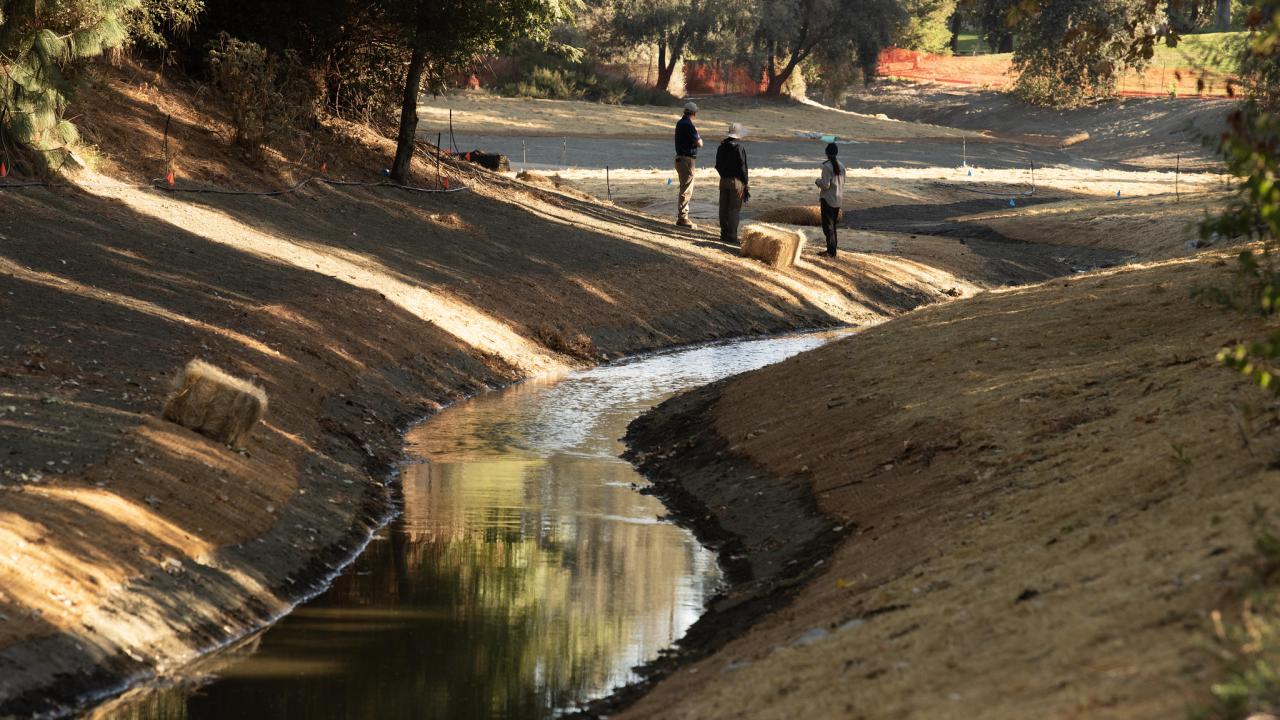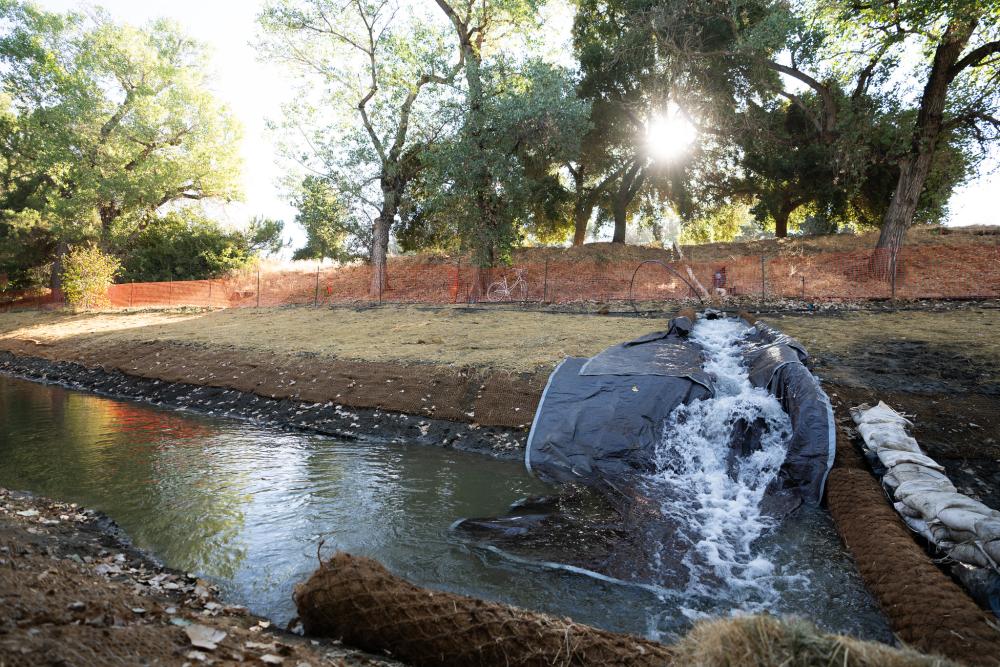
Arboretum Waterway Refill Begins

The Arboretum Waterway reached another key milestone in its ongoing restoration with water beginning to be reintroduced this week. The first phase of refilling began at the large, open area near Putah Creek Lodge, informally called Boathouse Lake.
The Arboretum Waterway Flood Protection and Habitat Enhancement Project, which began in March, is making significant progress in both increasing stormwater capacity and improving the ecological health of the Waterway. Project managers recently announced that the construction phase of the project is expected to finish nearly a year ahead of schedule.
Once the whole project is completed, it will increase the Waterway’s stormwater capacity by 6 acre-feet, introduce water flow to help control surface algae, and replace most of the existing concrete-lined banks with naturally sloped earth. These re-graded banks will soon be planted with native species, which will stabilize the soil and foster a more resilient ecosystem.
“The refilling process is starting slowly from the deepest point [Boathouse Lake] to avoid erosion of the freshly graded banks that could result from water rushing in quickly from a higher point,” said Andrew Fulks, assistant director of the UC Davis Arboretum and Public Garden.
Water from the university’s Lake Berryessa allotment — typically used for agricultural irrigation — will be utilized for the first portion of the Waterway refill. Once the Boathouse Lake is full, the water will be turned off until more segments of the Arboretum Waterway are ready to be refilled.
“While there’s still a lot of work to do before the entire Waterway Project is complete, it's exciting to see water returning earlier than expected,” said Nina Suzuki, Arboretum and Public Garden waterway steward.
Looking Ahead: What’s Next?
Once Boathouse Lake is full, the campus’s recycled water supply will be used to refill the rest of the Waterway. Stormwater runoff from rains will supplement the refill process and continue raising the water level once the planned refilling process is complete.
In the coming weeks, construction crews will focus on installing water-control hardware on the concrete weirs to regulate water levels and flow through key sections. By mid-November, teams expect the newly installed pumps at Lake Spafford to be installed. Once operational later this fall or early winter, water can move through all the weirs, fully activating the Waterway’s new circulation system.
As the project enters its final stages, efforts will shift to ecological restoration. Teams of Arboretum and Public Garden staff, students, community volunteers, and partner groups will begin planting native sedges, rushes, shrubs and trees along the Waterway’s banks, helping to stabilize the newly graded terrain, restore the area’s natural beauty, and create a thriving ecosystem for native wildlife.
To stay updated on the project’s progress, learn more about future plans, and sign up to volunteer for a community planting day, visit the Arboretum Waterway webpage.

